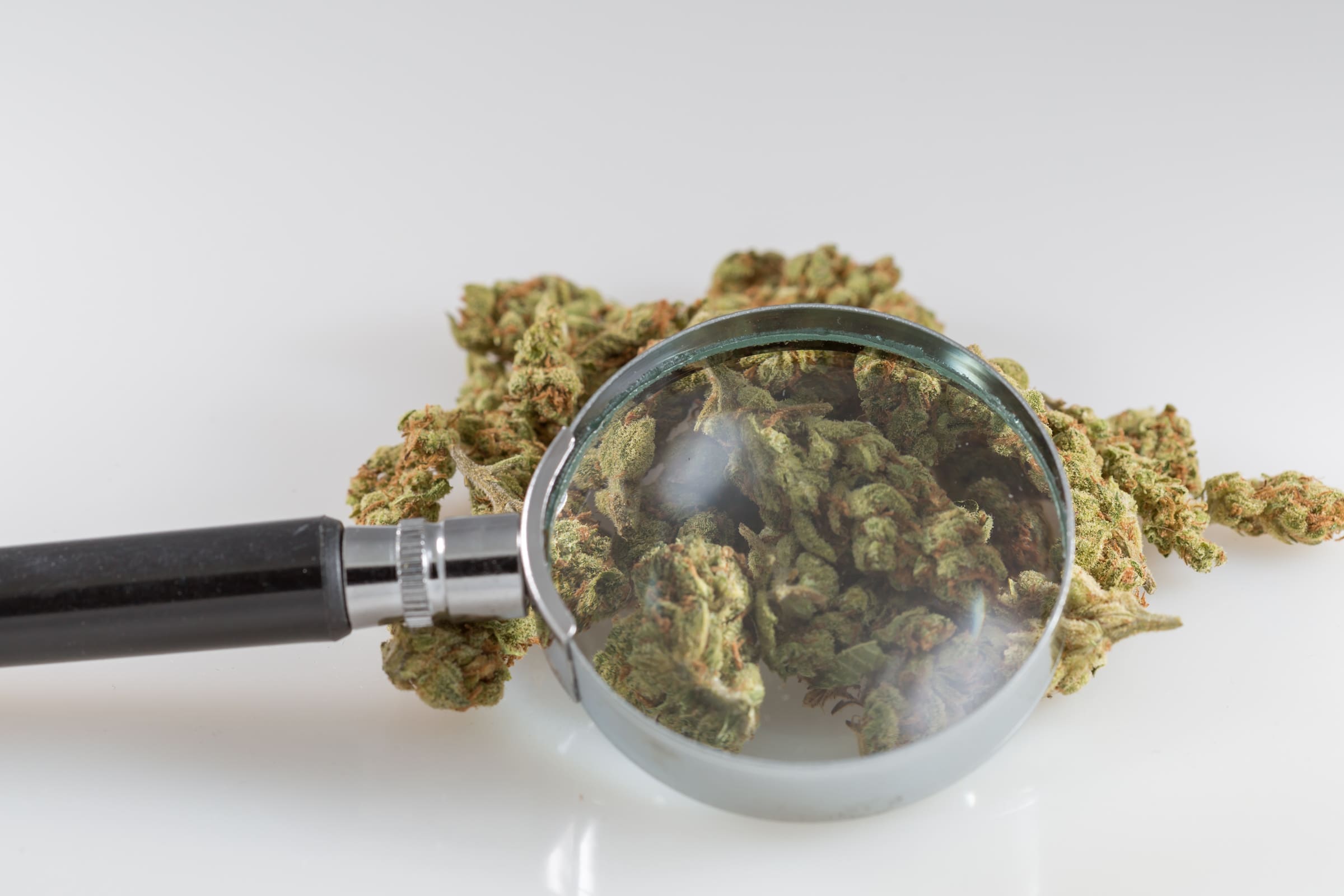Politics
DEA, FDA And Other Agencies To Discuss Marijuana’s Potential To Treat Pain At Upcoming Federal Research Meeting

A division of the National Institutes of Health (NIH) has announced it will hold an open meeting this summer to discuss the use of cannabis components to treat pain, with a special focus on minor cannabinoids and terpenes found in marijuana.
The June 4 meeting of the National Center for Complementary and Integrative Health (NCCIH) will convene dozens of NIH-funded researchers studying the pain-relieving properties of compounds in cannabis, and it will also feature a talk by officials at the Drug Enforcement Administration (DEA), Food and Drug Administration (FDA) and National Institute on Drug Abuse (NIDA) on cannabinoid research.
The event marks the final meeting of a group of investigators “who have been conducting NCCIH-supported projects on the mechanisms underlying the analgesic properties of minor cannabinoids and terpenes,” according to a blog post from Inna Belfer, an NCCIH deputy branch chief.
William Heuett, a DEA mathematician, is set to present on the agency’s “processing of schedule I research applications”—though it’s still not clear if marijuana will remain in Schedule I as of June—as well as DEA’s registration of cannabis researchers and producers.
He’ll be joined in an NCCIH-moderated panel also featuring Jennifer Hobin, who directs NIDA’s Office of Science Police and Communications, as well as Dominic Chiapperino, the director of FDA’s controlled substance staff.
Other panel topics include the safety and efficacy of marijuana in animal models and clinical studies, various research initiatives and opportunities through NIH and NCCIH as well as a variety of five-minute “data blitz” presentations from researchers around the country.
Late last year, NIH established its Resource Center for Cannabis and Cannabinoid Research aimed at helping scientists overcome barriers to studying cannabis under federal prohibition.
At the time, NCCIH’s Patrick Still, a program director for the agency’s Basic and Mechanistic Research branch, acknowledged the “growing interest in potential therapeutic uses of cannabis and its constituents among both health care providers and the public.”
“Substances in cannabis have a variety of pharmacologic effects, and rigorous research is needed to understand their mechanisms of action and investigate their possible value in helping to manage health conditions,” Still added. “However, investigators working in this field have encountered barriers that have hampered their research.”
The upcoming June meeting’s goals are to “highlight the progress made over the past 5 years” and “discuss challenges faced by researchers working in this field and look ahead to new opportunities to advance the science on cannabis, cannabinoids, and pain,” Belfer said.
Several agencies under NIH play supportive roles in the center’s work: NCCIH, NIDA, the National Institute on Aging (NIA) and the National Cancer Institute (NCI).
NCCIH will provide $1 million in total costs during fiscal year 2025 to fund the center, while NIDA and NIA will each contribute $100,000 in co-funding, and NCI will provide $200,000. Separately, NCI recently awarded researchers $3.2 million to study the effects of using cannabis while receiving immunotherapy for cancer treatment.
That announcement came after a National Advisory Council for Complementary and Integrative Health (NACCIH) meeting last May, where members approved the concept for the center, which was “expected to be a focal point for researchers entering the cannabis research space and to support the development and establishment of research tools and studies that will improve upon and eventually change the landscape of cannabis research.”
More research in recent years has also focused on cannabinoids beyond THC and CBD. For example, a literature review in the journal Molecules earlier this year focused on the “collaborative interactions” of various chemical compounds in marijuana—including cannabinoids, terpenes and flavonoids—arguing that a better understanding of the components’ combined effects “is crucial for unraveling cannabis’s complete therapeutic potential.”
“In cannabis science, cannabinoids, terpenes, and flavonoids have often been overlooked, with much of the literature focusing predominantly on the major cannabinoids THC and CBD,” the study in Molecules said. “However, emerging evidence suggests that these constituents, particularly cannabinoids and terpenes, play a substantial role in interacting and collaborating. This interplay gives rise to the diverse effects, benefits, and side effects observed among different cannabis strains, which can vary in the ratios of these components.”
Despite obstacles to studying controlled substances, research has ticked up amid the growing legalization movement. According to analysis by the advocacy group NORML at the end of last year, scientists have published more than 32,000 marijuana studies over the past decade, with some recent years setting records for research.
While much of that research has focused on the effects of cannabis consumption, some studies have tried dig into the fundamental chemistry of cannabis. Just last year, for example, scientists discovered “previously unidentified cannabis compounds” called flavorants that are responsible for the unique aromas of different varieties of marijuana. Previously, many thought terpenes alone were responsible for various smells produced by the plant.
A NIDA-funded study published last month, meanwhile, found that a citrusy-smelling terpene in marijuana—limonene—may help ease anxiety and paranoia associated with THC. The findings, researchers said, could help unlock the maximum therapeutic benefit of THC and protect public health.
And since the end of the federal prohibition of hemp, research into the low-THC form of cannabis has also stepped up. Last year the U.S. Department of Agriculture (USDA) published guidance on how to identify, describe and evaluate different varieties of the plant as officials work to rebuild a government seed bank that was destroyed during prohibition. The department also posted a video instructing hemp farmers on how to build and use a Ghostbusters-like backpack vacuum, which USDA says can collect up to 10 grams of cannabis pollen in less than a minute.
USDA has also approved two genetically modified versions of hemp that contain higher or lower levels of some cannabinoids, including minor ones such as CBG and CBC.
Marijuana Rescheduling Announcement Coming ‘Very Soon,’ As Early As This Week, Opposition Group Says
















